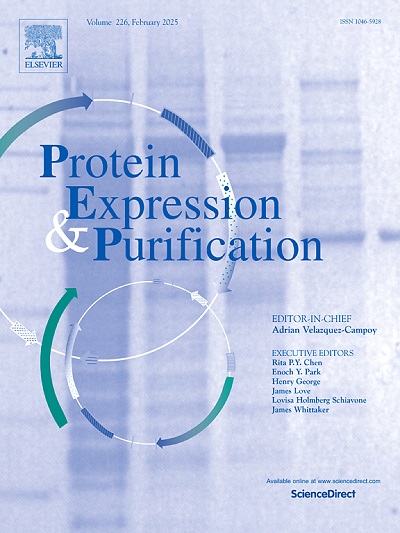重组CLCF1蛋白与人血清白蛋白融合在动物细胞中的高产生产及其对啮齿动物的毒性评价。
IF 1.2
4区 生物学
Q4 BIOCHEMICAL RESEARCH METHODS
引用次数: 0
摘要
基于重组蛋白的生物制药已经发展成为各种疾病的治疗方法,特别是癌症、糖尿病、传染病和自身免疫性疾病。在本研究中,我们进行了基于CLCF1蛋白的生物药物开发研究。首先,我们建立了在ExpiCHO-S™细胞和Expi293F™细胞中瞬时表达重组人CLCF1蛋白的策略。对于CLCF1蛋白的分泌,我们建立了人CRLF1或sCNTFR与CLCF1蛋白共表达的策略。结果,CLCF1蛋白与CRLF1或sCNTFR形成复合物,并成功分泌。此外,CLCF1蛋白的产量也显著提高。通过对共转染质粒比例、温度、CO2浓度和收获时间的研究,CLCF1的产量从3 mg/L显著提高到22 mg/L,提高了7倍。接下来,考虑到改善药代动力学性质和GMP设施中已证实的生产方法,我们与HSA(白蛋白CLCF1)构建了重组CLCF1融合蛋白。我们评估了各种CLCF1蛋白的生物活性。考虑到蛋白质产量、物理性质和功效,我们对Sprague-Dawley大鼠进行了4种蛋白质单次静脉给药,以评估其短期毒性。因此,根据行为体征观察和体重变化,未观察到与毒性相关的CLCF1蛋白。总之,我们成功地建立了在哺乳动物细胞中生产和表征具有生物活性的重组CLCF1蛋白作为潜在生物治疗药物的策略。本文章由计算机程序翻译,如有差异,请以英文原文为准。
High-yield production of recombinant CLCF1 protein fused with human serum albumin in animal cells and toxicity evaluation in rodents
Recombinant protein based biopharmaceutics have been developed as therapeutics of various diseases, especially cancer, diabetes, infectious diseases, and autoimmune diseases. In this study, we conducted a study for the development of biopharmaceuticals based on the CLCF1 protein. First, we established strategies for producing recombinant human CLCF1 protein by transient gene expression in ExpiCHO-S™ Cells and Expi293F™ Cells. For the secretion of CLCF1 protein, we established strategies that human CRLF1 or sCNTFR with CLCF1 protein were co-expressed. As a result, the CLCF1 protein formed a complex with CRLF1 or sCNTFR, which was successfully secreted. Furthermore, the productivity of CLCF1 protein was significantly increased. The ratio of co-transfected plasmids, temperature, CO2 level and time of harvest were explored, so that the productivity of CLCF1 was remarkably increased 7-fold from 3 mg/L to 22 mg/L. Next, we generated recombinant CLCF1 fusion protein with HSA (Albumin CLCF1) considering the improvement of pharmacokinetic properties and the proven production method in GMP facilities. We evaluated the biological activity of various CLCF1 proteins. In consideration of protein productivity, physical properties, and efficacy, we conducted a single intravenous administration of 4 types of proteins in Sprague-Dawley rats to evaluate the short-term toxicity. As a result, no toxicity related CLCF1 proteins was observed based on the behavior sign observation and body weight changes. In conclusion, we successfully established the strategies of production and characterization of biologically active recombinant CLCF1 proteins in mammalian cells as potential biotherapeutics.
求助全文
通过发布文献求助,成功后即可免费获取论文全文。
去求助
来源期刊

Protein expression and purification
生物-生化研究方法
CiteScore
3.70
自引率
6.20%
发文量
120
审稿时长
32 days
期刊介绍:
Protein Expression and Purification is an international journal providing a forum for the dissemination of new information on protein expression, extraction, purification, characterization, and/or applications using conventional biochemical and/or modern molecular biological approaches and methods, which are of broad interest to the field. The journal does not typically publish repetitive examples of protein expression and purification involving standard, well-established, methods. However, exceptions might include studies on important and/or difficult to express and/or purify proteins and/or studies that include extensive protein characterization, which provide new, previously unpublished information.
 求助内容:
求助内容: 应助结果提醒方式:
应助结果提醒方式:


